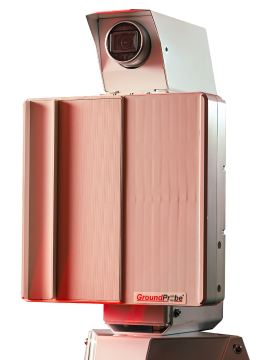Why Machine Learning is Crucial to the Future of Safe Mining Operations

 GroundProbe’s Software Engineer – Machine Learning, Alice Nguyen
GroundProbe’s Software Engineer – Machine Learning, Alice Nguyen
Machine Learning – Where it all started?
When considering Machine Learning (ML) many think of elaborate technologies running on high-computing machines. Surprisingly, ML dates back to 1943 when the first mathematical model of a neural network was developed by Walter and Warren to mimic human thought processes. It is only recently that the application of ML has become more commonplace with the release of improved algorithms and datasets.
Today, we are surrounded by ML applications in such forms as self-driving cars, recommendation systems for online shopping and movie suggestion within various streaming platforms.
Whenever and wherever data exists, there is an opportunity to apply ML, in multiple formats, and across multiple industries, including the mining industry.
Machine Learning – The application and benefits to the mining industry
The following are simplified examples of the many benefits of applying ML to the mining industry:
Optimising safe operations and cost savings?
Driverless heavy haulage trucks, loaders, drills and trains are examples of embedded ML systems already in use within the mining industry, with many used to complete work that was previously deemed unsafe for workers. According to Rio Tinto, the automation of self-driving machinery has reduced their conventional vehicle costs by ~15%. Aside from optimizing safe work operations and cost savings, autonomous vehicles also provide increased productivity and loading/lifting heavy capabilities.
Supervised and unsupervised algorithms are applied to ‘teach’ the machinery to complete the task. While supervised algorithms such as regression, classification and detection of objects or abnormal events focus on learning from labelled data and make predictions, unsupervised algorithms such as clustering find the similarity and dissimilarity among data points and detect patterns.
These algorithms are considered the ‘brains’ of the machines – providing the information needed to make decisions on where to move, which objects to pick up or avoid and signalling an alert if something unusual is detected.
Ability to save lives and help make crucial decisions
According to Safe Work Australia, in 2012-2013 work-related injury and disease cost the Australian economy $61.8 billion, representing 4.1% of GDP and the majority of the cost (77%) was borne by workers.
Prioritising safety-first, many mining companies have introduced additional self-operating 24/7 early-warning systems, such as GroundProbe’s RGR-Velox. The radar’s advanced technology is designed to detect and track ongoing geohazards in real time. Both historical and streaming data are sourced from the radar and coordinated into ML models to predict future patterns and provide early warnings alarms to prevent potential hazardous events. This ensures continued safe mining practices and prevents catastrophic slope failures that may cause loss of life and/or mass environmental damage.
What does the future look like?
My personal prediction is that with the advancement of ML, we will see more applications continuing to play crucial roles in the optimisation of safe mining operations around the world, now and into the future.




